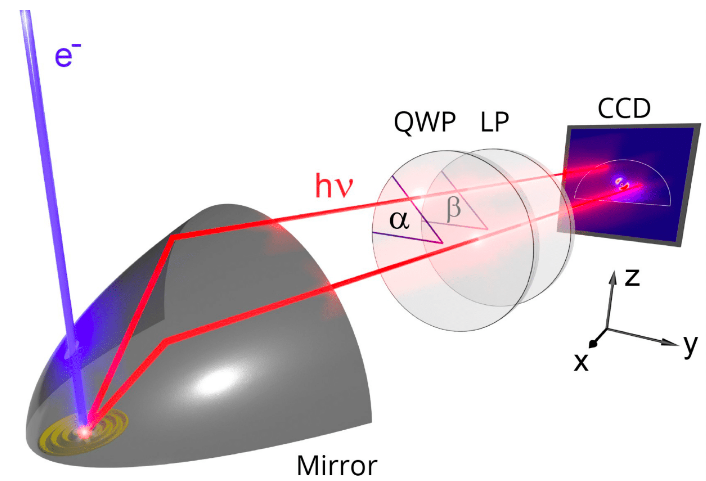Polarization-filtered cathodoluminescence imaging is one of the six imaging modes that are available in the SPARC CL detector. So far we focused on how cathodoluminescence measurements can reveal spectral content and angular distribution of the emission. In this post, we explain how cathodoluminescence polarization can be an important tool for in-depth analysis of material emission.
Polarization is a light property, which describes in what direction electromagnetic fields oscillate. Recent breakthroughs in the characterization of nanophotonic structures with polarization have demonstrated the importance of mapping the full polarization properties [1]. Cathodoluminescence spectroscopy is a great technique for accessing polarization information.
In order to do that a rotating-plate polarimeter made of quarter wave plate (QWP) and linear polarizer are used an angle-resolved setup of the SPARC system (see the image above). Cathodoluminescence is collected in the paraboloid mirror and then filtered by this polarization analyzer. Using the Stokes vector to determine polarization states (linear, elliptical, circular) of the light, it is then possible to retrieve polarization information for every emission angle. To gain full original polarization information the measurement has to be performed for six analyzer settings and corrected for the effects of the paraboloid mirror.
Polarization plays a key role in light-matter interactions, and can be effectively used to study various materials, for example, plasmonic bullseye antennas. This unique technique can also be used to explore the relation between the symmetry of a system and its polarization response. Additionally, CL polarimetry can characterize incoherent luminescence from bulk and nanostructured materials, as well as locally study material anisotropy, birefringence and optical activity.
References
[1] C. I. Osorio et al. ACS Phot. DOI: 10.1021/acsphotonics.5b00596 (2015).
.png)






